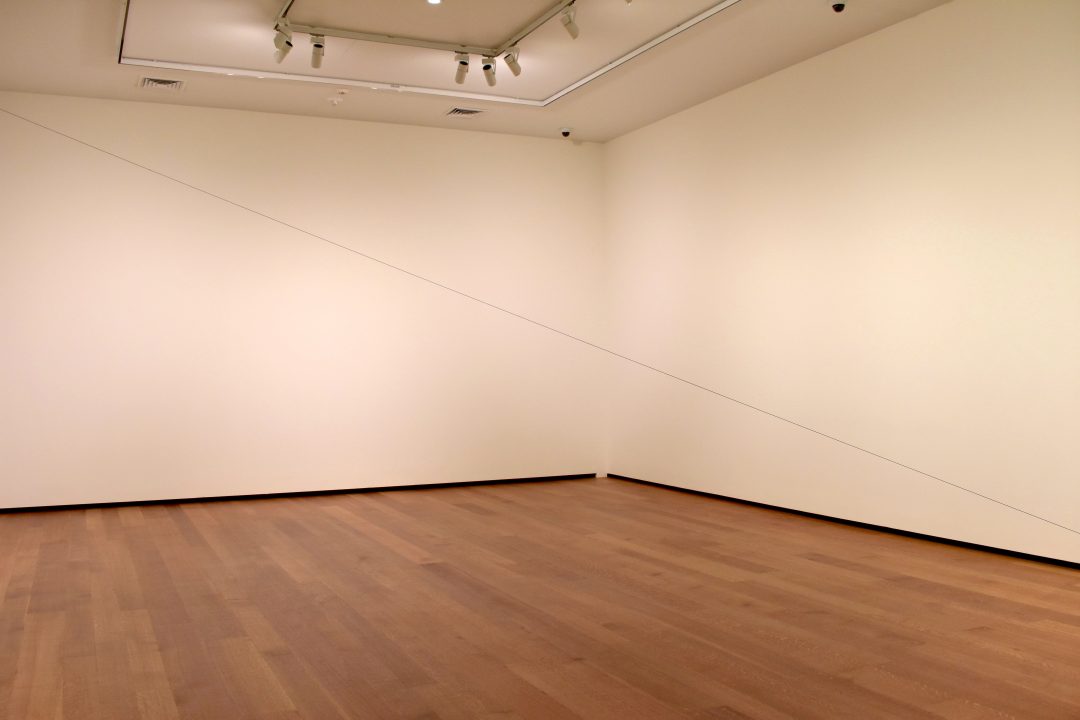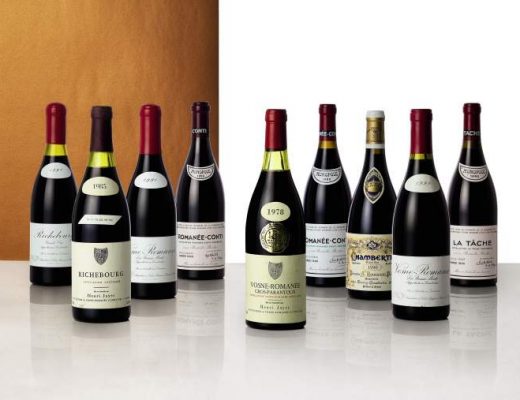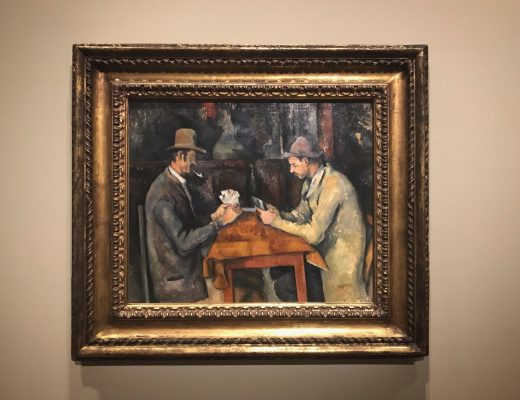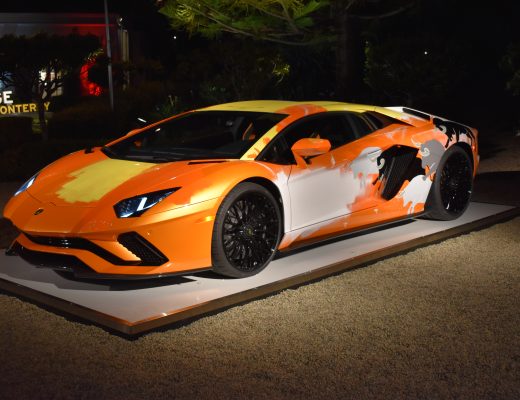Fred Sandback, American, 1943-2003. Untitled (One of Four Diagonals), 1970. Black Elastic Cord Installed Across a Room from an Upper Corner to the Lower Corner of the Diagonally Opposite Corner.
Standing at the entrance to the Spaces: Works from the Collection 1966-1976, I hesitated, unsure whether to go in. There was almost nothing inside. From where I was standing, all I could see was just a black elastic cord installed across a room. I was trying to examine the elastic cord and expected that there might be something special about it. However, it’s just a cord.
For subject matters like this elastic cord, the lack of any apparent meaning is my first impression, and probably a common impression for most people. However, this minimalism installation in the National Gallery of Art is not about exhibits themselves, but the environment around them, including viewers.
Traditionally, the way we interpret art is by studying artworks themselves. The “seven elements of art” (line, form, shape, color, value, space, texture) is always a good start. If we associate the artwork with the historical context where it was created, some metaphorical subtext can be further deduced. Since this classic appreciation is subject-oriented, viewers tend to hustle themselves into the closest position to the artwork, in order to get a better vibe of it.
Minimalism, on the other hand, urges its audience to wander around and observe the art from a distance. It further rejects the subject-oriented expectation of art by using materials from mass production, which counters peoples’ premise about the exclusiveness in art.
Created by Fred Sandback in 1970, Untitled (one of Four Diagonals) consists of a black elastic cord diagonally dividing the volume of the gallery space into two equal triangles. The design of this installation is based on an idea about the fractal expansion of the triangle. Standing and observing the elastic cord from different angels, viewers can experience how the volume of room is exposed under a series of triangle zones. What makes this installation mathematically beautiful is that the gallery space where the artwork is displayed has often changed and the shifting situations challenge Sandback to coordinate the cord and its visual effect within irregular space of the gallery.
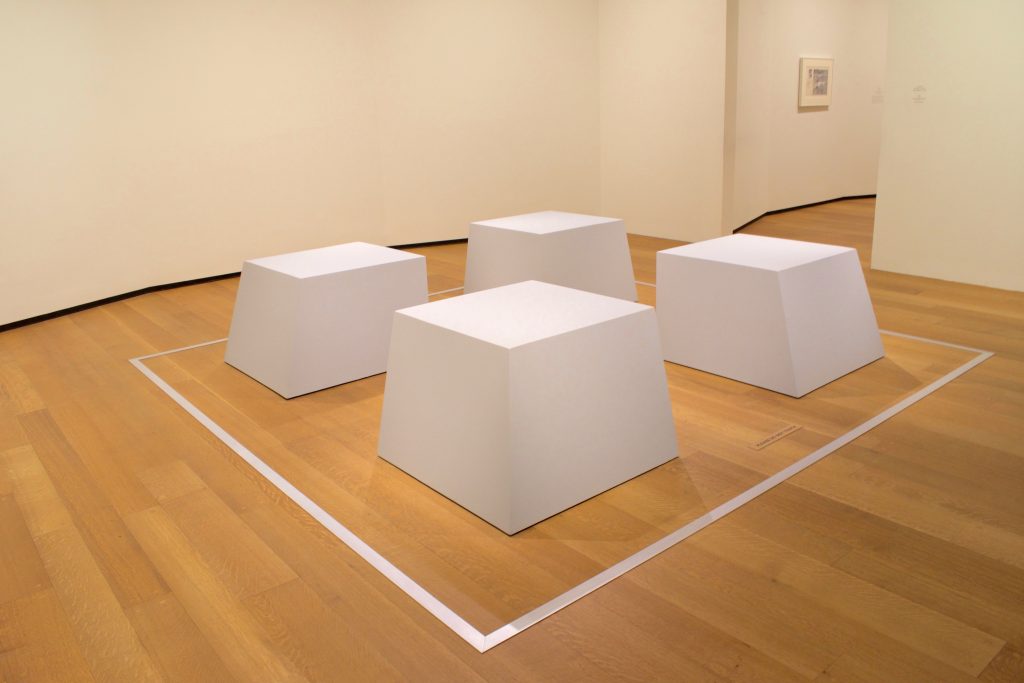
Untitled (Battered Cubes), an exhibit placed in the room next to the display of elastic cord, reveals the volume of gallery space with a different technique—closed geometric shapes. Four identical fiberglass cubes with slanted profiles are installed on the floor. This time the space of the room is divided not by a single diagonal line, but planes extending from surfaces of cubes. Cubes are separated from each other with blank space, which can be perceived as a symbol of individualized existence. However, as a whole, repeated geometric surfaces are echoing with each other, serving as reference points to help viewers navigate around the room.
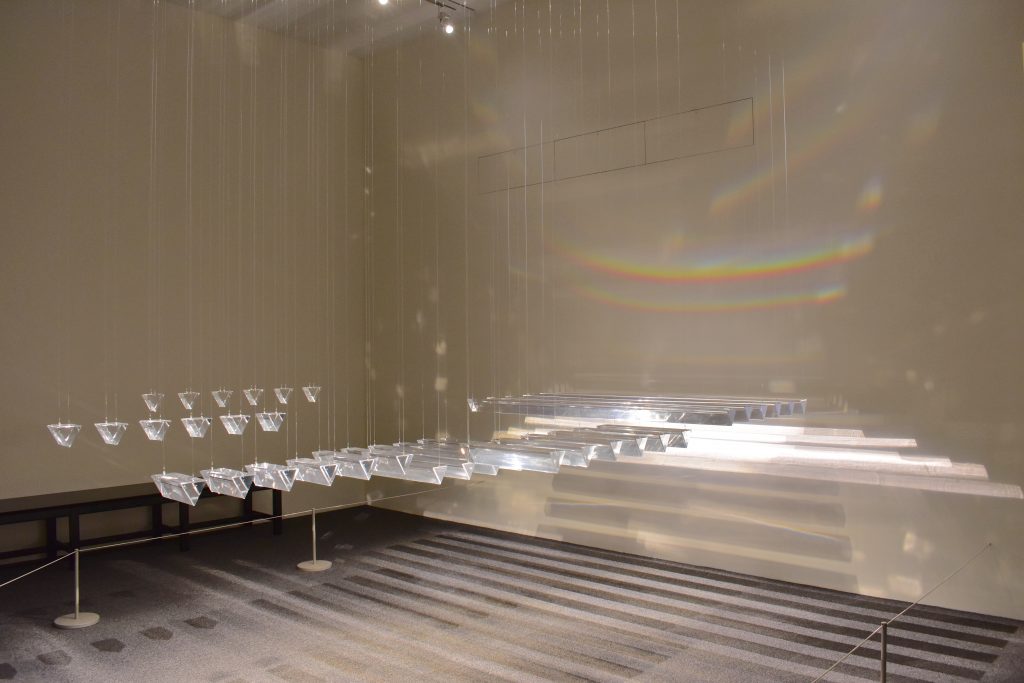
Collaborating with choreographers Anna Halprin and Yvonne Rainer, Charles Ross’s Hanging Islands introduces an important element—light—to the expression of minimalism. Hanging in the room by metal strings, six sets of six identical prisms constructed with Acrylite are placed with identical spaces between them.
As viewers walk around the room, they may notice that reflections of prisms on the floor diminish in scales starting from the front wall to the back wall of the room. Meanwhile, the color of reflections of light disperse across the front wall and finally fades out as reflections reach at the foot of front wall. Depending on where viewers stand, their visual experiences change, which mimics theatrical performance where seating influences audience’s perception of performers.
I walked back to the entrance at the end of my tour. When I was pacing back and forth to take some pictures of wall texts, I noticed a guard standing at the corner fenced by that elastic cord exhibit. He looked at me for a second and shifted his eye to the outside of the exhibition. I wondered if he saw a different image of space divided by the cord from there.

